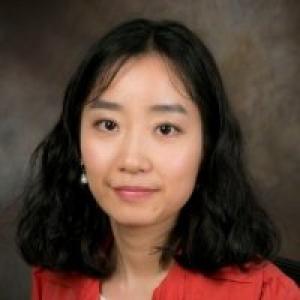
Hyojung Choo
Assistant Professor
404-727-3727
Office Location:
542 Whitehead Research Building, Emory School of Medicine
Emory University
"Craniofacial muscles are essential muscles for normal daily life. They are involved in facial expressions (facial muscles), blinking and eye movement (eye muscles), as well as speaking and eating (tongue and pharyngeal muscles). Interestingly, craniofacial muscles have differential susceptibility to several muscular dystrophies. For example, craniofacial muscles are the most affected muscles in oculopharyngeal muscular dystrophy but the least affected muscles in Duchenne muscular dystrophy. Among craniofacial muscles, dysfunction of tongue and pharyngeal muscles could cause an eating disability, called dysphagia, afflicts almost 15 million Americans including elderly, neuronal (Parkinson's disease and bulbar-onset amyotrophic lateral sclerosis) and muscular disease (oculopharyngeal muscular dystrophy) patients. However, no cure or therapeutic treatment exists for dysphagia caused by muscular dystrophy. Elucidation of the mechanism(s) behind these differing susceptibilities of craniofacial muscles could lead to development of potential therapeutics targeted to specific skeletal muscles involved in particular types of muscular dystrophy. The mechanisms of skeletal muscles are of interest here because skeletal muscle cells are multinucleated cells. Typically, skeletal muscle cells contain hundreds of nuclei in a single cell since they are generated by fusion of muscle precursor cells during development or by fusion of muscle specific stem cells, called satellite cells, in adult skeletal muscles. However, it is unclear how skeletal muscle cells regulate the quantity and quality of these multi-nuclei. Since craniofacial skeletal muscles, such as extraocular and pharyngeal muscles, have active satellite cell fusion in comparison to limb muscles, they are therefore suitable models to study myonuclear addition and homeostasis."
IRI Connection:




